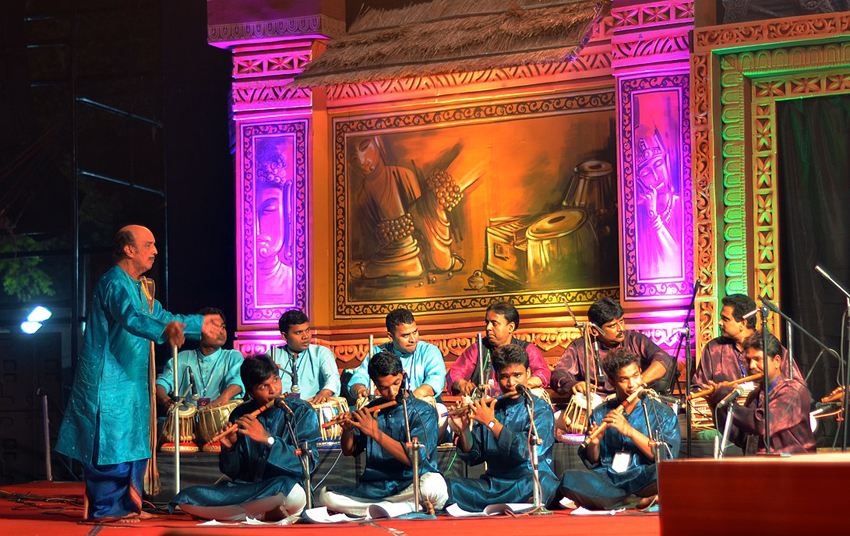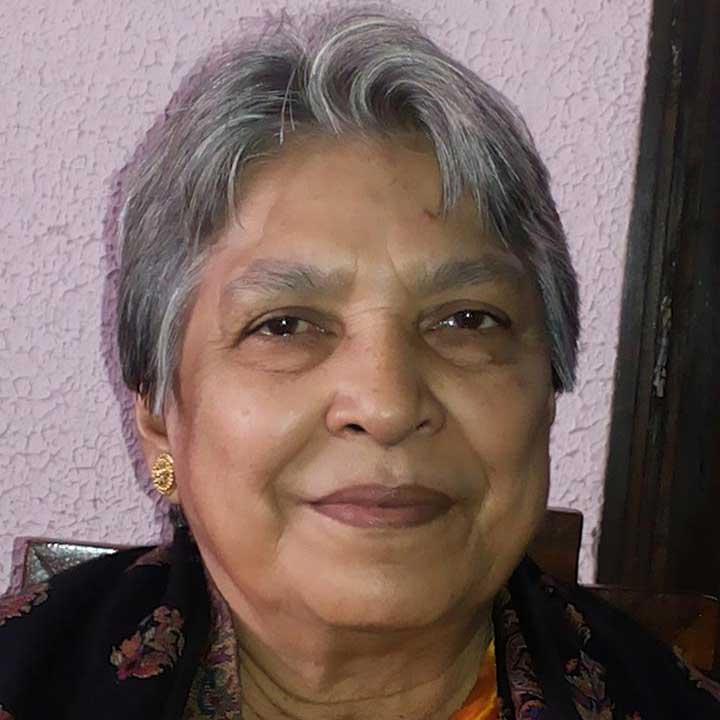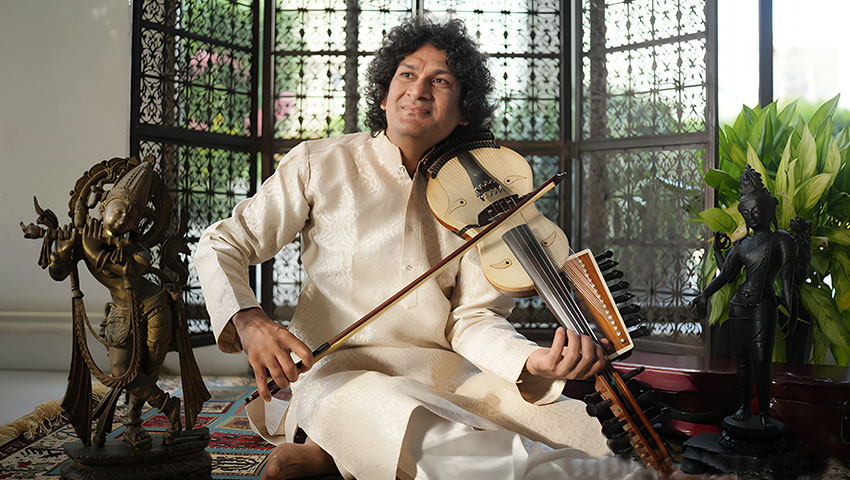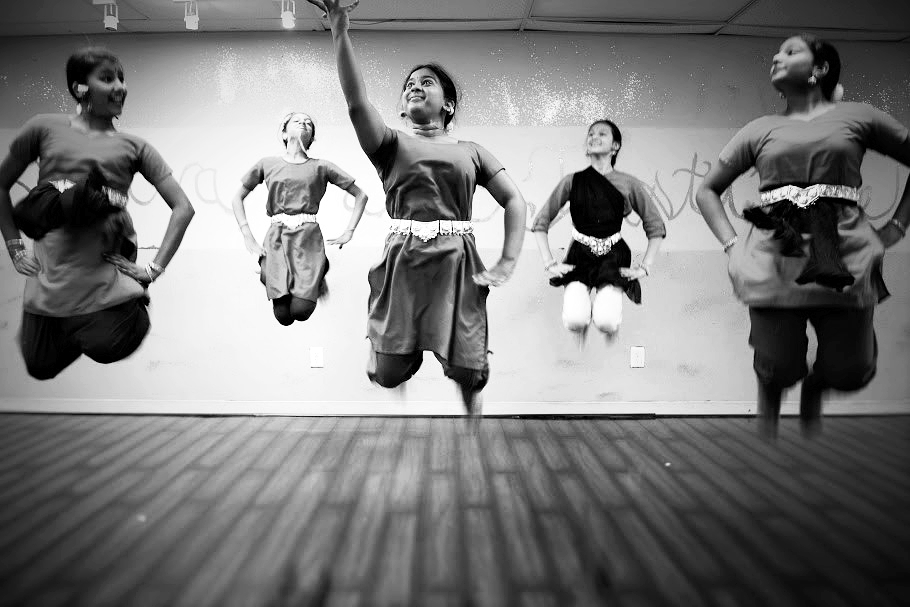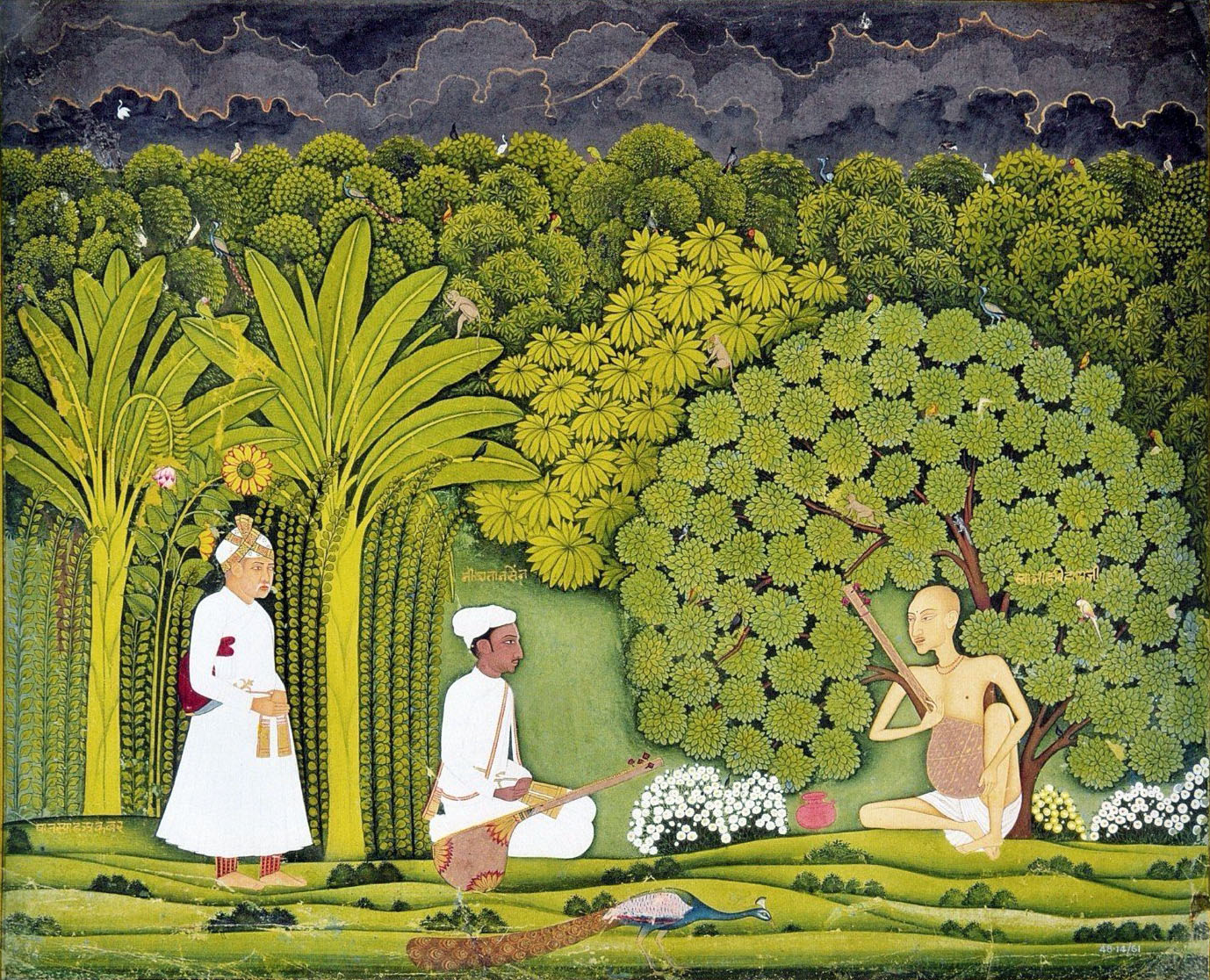Utkal, or Odisha, the holy land of Lord Jagannath is known for its excellence in the sphere of the arts. The pursuit of excellence in all spheres of art- sculpture, music and literature- is a defining feature of the culture of Odisha.
Rich in musical tradition, the fertile land of Odisha has produced rich harvests in Odissi Dance and Odissi Music. The poetic nature of the Odishan people has always made them resort Sangeeta, which is a combination of music-vocal and instrumental-and dance.
Historical pieces of evidence suggest that in Odisha, music and dance were seriously pursued under royal patronage right from 2nd century BC and by around 10th century A.D. Odissi music had crystallized into a distinctive classical style. The treatises unmistakably point to the fact that Odissi is one among the known schools of Indian classical music and it has a distinctive system of Raga and Taala and a characteristic style of rendition that is lyrical in its movement with wave-like ornamentations.
The tradition consists of two components, the written and the oral. Of the many treatises written on this distinctive tradition of music, the bulk was written between the 16th and 18th century. Five of these treatises, such as Geeta Prakash, Sangeeta Narayan, Sangeeta Kalpalata etc are now available in parts and two are in the form of palm-leaf manuscripts.
The history of Odisha’s musical tradition goes back to the 2nd century B.C. and there is documentary evidence of this. It also has architectural evidence as is reflected on the rock edicts of Hatigumpha (elephant cave) of king Mahameghavahana Kharavela in Uayagiri (hill) at Bhubaneswar. Drawing conclusion from the available archaeological evidences, historical facts, literary and documentary proofs as well as oral tradition handed down from generation to generation along with a distinctive style of presentation, complete with grammatical and technical aspects, it is not difficult to see why “Odissi” is significantly one of the important streams of Indian Classical music with a rich treasure of musical renderings like Chhanda, Champu, Choupadi, Chautisha and the lyrics of Geet Govinda of Jayadev as well as many other texts.
Odissi Music has the finest combination of harmony in its melody, which loses nothing of the essential qualities of classical music. The individualistic character of Odissi Music makes every recital an enjoyable exercise in interpretation and self-expression.
Odissi music is very subtle. It characterizes and distinguishes itself by the elements of spontaneous creativity and embellishment of the melody and rhythm with a vibrated movement. Text is the body of an Odissi song and Bhava or mood is the soul. In Odissi music, the insistence is more on the emotion and lyrical impulse. An elegant blend of text and mood (Bhava) and proportionate musical elements is abundant in Odissi music. The use of “Gamakas” (basic technical rendering style) give a special flavor and a special colour, as well as a special entity and distinctiveness to Odissi music.
Geographically, Odisha is so situated that for centuries it has been the meeting point of the cultures of the North and the South. It is therefore natural that the Odissi tradition has not only been influenced by the two major schools of Indian Classical music, it has also influenced them to a large extent.
The rock edict of the caves of Udayagiri and Khandagiri hint at the existence of music which had a class of its own. It clearly indicates through the sculptural art that Kharavela was a great patron of cultural activities. Bharatamuni, in his Natyashastra also has mentioned about the music, the Udramagadhi, Prabrutti, which people distinguish as ‘Odishi Music’.

Around 9th and 10th Century A.D. the Buddhist saints had written and composed the first Raga Ragini based lyrics. These are known as Charyageeti or Charya Pada. Songs written in this style with mention of the name of the Ragas are considered to be the first such exercise in the history of literature and music in India. A few Ragas are Pattamanjari, Debakri, Deshakhya, Bhairabi, Dhanashree and Baradi. Most interestingly, Sri Jayadeva has mentioned some of the Ragas of Charyapadas in his Ashtapadis written in the 12th century. This demonstrates the class of singing of Odishan music right from such ancient times. Sangeeta Ratnakara, a great treatise of Music-Dance and Rhythm, written around 13th century by Sharangadeva has also mentioned about Raja Paramardee, which indirectly shows the richness of Odissi music as history has it that Raja Paramardee was a flautist and was related to Odisha through his marriage connection. Then comes Sarala Mahabharata followed by the great literature of Panchasakha and the great poets like Kabisurya Baladev Rath, Abhimanyu Samantasinghara, Kabi Chandra Kalicharan Patnaik and many more, who have enriched the music of Odisha through their timeless literary contribution.
It is significant to observe that the rich tradition of Odissi Music, Odissi Dance and Odissi Percussion is interwoven, from time immemorial, with the temple rituals. It has been a wonderful symbiosis between the devotion and the artistic expression of the people of this blessed land. Out of this relationship has emerged an aesthetics that has ensured the continuation of musical tradition, almost intact, through the centuries.
[adrotate group=”9″]
Lord Jagannath stands at the apex of Odishan culture. Everything centres around him. Out of 36 servitors of the temple, the servitors for dance, music and percussion have always held a very important place. The morning services start with music seva and the day also end with music when the deity goes to sleep. Odisha is famous for its rituals and festivals. So it is said, in twelve months there are thirteen festivals in Odisha. Needless to say that in all these festivals and rituals music takes a prime role in upholding the age-old tradition Odissi music.
The art and architecture of Odishan temples and caves are not only wonderful but also unique in respect of their aesthetic appeal. The images of dancers, instrumentalists and the royal couple enjoying music, dances, play or procession stand as the testimony of rich musical tradition of ancient Odisha and profoundly signify a long religious legacy.
The literature and music of Odisha go hand in hand. Perhaps this is the stream of music where the language, the content and the Rasa are given more importance. The language is generally very rich with ornamentations. But the content is devotional, religious and also romantic. Most of the time it describes the divine love dalliance of Sri Radha and Sri Krishna through the lyrics, songs and Prabandhas. Sri Jayadeva’s Geeta Govinda in Sanskrit, Kabisurya Baladeva Rath’s Kishore Chandranana Champu and epics of many great poets depict the same theme.
The rendering style of Odissi music is unique. It is structured in several different ways depending on the context and according to several genres and divisions of its vast repertory.
The salient features of Odissi music are:
- It has an age-old tradition.
- It has a system of Ragas along with its core Ragas.
- A system of Taal, which is unique and
- It has a distinctive rendering style.
But keeping in view the language, literature and rendering style, the further division has been done for guiding the performances. The special features in its rendering style are its medium pace in singing.
- Raganga-The Odissi Prabandha is based on a Raga or a melody which follows a proper grammar. Within the parameter of that grammar, the rendering is done through Alaap (Introduction of the Raga through notes without any rhythm accompaniment) without distorting the language and the content followed by the musical expansion of different words or a phrase called ‘Pada Binyasa’. It depends on the artist’s own innovations with ornamentations to elevate his/her presentation. Variations of swaras in the format of Sargams and Taans are done to add to their beauty.
- Bhabanga-As its name suggests Bhava or the mood of the song is well expressed and emphasized. It is based on a Raga but the vocalist has the liberty to mix other Ragas to evoke the appropriate ethos of the song.
- Dhruba Padanga or Dhrupadanga –The lyrics or the prabandhas are written for this style of presentation where taal takes the upper hand over the theme or the content. For example ‘Malashree’ comes under this style of rendering. Most of the time Malashree is in praise of different Gods and Goddesses.
- Natyanga –As the name suggests has the elements of theatre or drama. The subject of the Prabandha is well expressed in a lighter vein, very lilting and entertaining.
[adrotate group=”9″]
Then comes the other genres which come under the repertoire of Odissi.
Champu – Kabisurya Baladeva Rath’s, Kishore Chandranana Champu is the most popular epic which describes the love-play of Radha and Krishna with literature of high order, where the particular Ragas for each lyric has been prescribed. This epic contains 34 songs or Champu corresponding to 34 Odia alphabets from “Ka” to “Khya” and each lyric is unique in its own way. And the most unique thing is that the techniques have been transmitted orally over the ages and the same tune is sung in all parts of the state on prescribed Ragas. Needless to stay, champu stands as the testimony of Odissi Classical Music. The taal ‘Adatali’ unique ONLY to Odissi Music and not found in any other system of music is the soul of the number of champus out of 34 songs.
Chhanda – It’s a special type of writing which establishes a particular metrical pattern and the tuning is ascertained from the particular metrical pattern. Meter is confirmed by counting the letters used in a particular “Chhanda”. The theme is again devotional and also sometimes it describes the romance of imaginary characters etc. Chhandas are basically very long poems.
Choutisha or Choutirisha-This song is written in 34 stanzas corresponding to 34 Odia alphabets and sung in some particular tuning, which expresses devotional feelings or the philosophy of human life.
Geeta Govinda – Sri Jayadev’s Geeta Govinda speaks about the Keli Katha or the divine love play of : Radha-Krishna, which is a very popular theme. Everyday Sri Jagannath listens to Geeta Govinda through an appointed seva. Odissi dance or Odissi music performance is incomplete without the rendition of Ashtapadi from Geeta Govinda, where again the Ragas and Taals to be used have been specifically directed by the poet.
Bhajan and Janan – The literary tradition of Odisha contribute to music and vice versa. The artist sings about the glory of the Lord and prays or appeals for redressal of his/her miseries.
Odissi music is marked for its melody, lucidity, expression-and special taal system and the accompanying instruments make it unique.
Mardala is the accompanying percussion of Odissi music. Its playing style, sound, rhythm patterns make its accompaniment very special. From among many Taals “Ada-Taali” makes its taal system stand apart.
The techniques of rendering lie in the use of special Gamakas (the treatment of notes in various ways) and the expressions of ‘Padis’ (special way of writing which is in a different meter in a Prabandha) through a complex system of Taal.
The great Gurus and musicologists who have toiled hard to bring this rich tradition to this stage, definitely need a special mention. It is only their effort which has strengthened the roots of Odissi Music in many ways i.e., – training of the students, writing of books, performances through solo and duet, lecture-demonstrations or by accompanying Odissi dance performances.
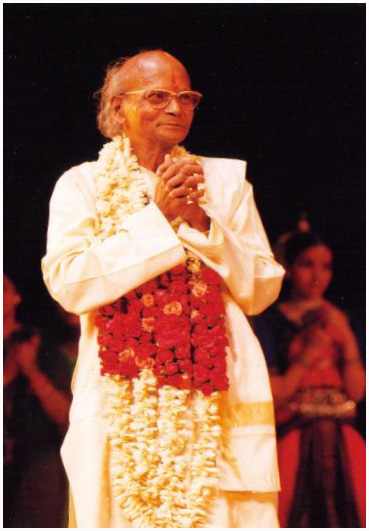
The great pioneers of Odissi music are Kabichandra Kalicharan Patnaik, Singhari Shyamsundar Kar, Sri Nrusinghanath Khuntia, Pt Apanna Panigrahi, Pt Tarini Charan Patra, Pt. Upendra Tripathy, Pt. Nilamadhav Panigrahi, Guru Kelucharan Mohapatra, Sri Narayan Tripathy, Sri Narayan Behera, Sri Markandeya Mohapatra, Sri Kashinath Pujapanda, Smt Binapani Mishra, Sri Jiban Pani, Sri Shyam Sundar Dhir, Sangeet Sudhakara Balakrushna Das, Pt. Bhubaneswar Mishra, Pt. Raghunath Panigrahi, Dr. Damodar Hota, Guru Gopal Chandra Panda, Sri Kirtan Padhi, Sri Biswanath Pujapanda, Sri Sukadev Patri, Guru Banamali Moharana, Sri Harmohan Khuntia, Smt Shyamamani Devi, Sri Rakhal Ch. Mohanty, Sri Padmacharan Panda, Guru Mahadev Rout, Sri Banamali Maharana, Prof. Ramhari Das, Smt. Binapani Nayak and many more.
With the individual efforts of the Gurus, writers and performers, Odissi music has taken a shape which has attracted the music lovers even beyond the boundaries of Odisha.

The support of the Govt. Institutions like Utkal Sangeet Mahavidyalaya and Odissi Research Centre has undoubtedly created a number of Odissi musicians and carried forward this legacy to the outer world by organizing programmes and providing scholarships. The contributions made to this field by Kala Bikash Kendra, Cuttack, National Music Association, Cuttack, Utkal Sangeet Samaj, Jaga Akahadas of Puri and Kalinga Bharati, Cuttack definitely need a special mention.
A number of books have been written in Odia, Hindi and English for the reference of art lovers. It is really very interesting to observe that people from abroad and musicians other than odias are coming forward and showing their interest to learn Odissi music. Many foreign students are also doing research on the subject.

Vocal and instrumental Odissi Music are getting prominence through a number of festivals organized throughout the country. Odissi recital has already got a place in the classical music festivals namely, Haridas Sammelan, Mumbai, Kalke Kalakar, Mumbai, in the music festival organized by Sangeet Natak Akademies (both centre and the state) and in a number of other festivals organized in the country and abroad.
A number of CD’s of Odissi music repertoire are available in the market which has a great demand.
The youngsters are showing a lot of interest to pursue this as a career and the parents are quite interested that their children may learn Odissi music.
A few leading artists of this generation are Dr. Suchitra Mahapatra, Dr. Bijoy Jena, Dr. Dheeraj Kumar Mohapatra, Sri Keshab Chandra Rout, Sri Binod Bihari Panda, Smt. Sangeeta Panda, Sri Chandramani Lenka, Mohapatra Minati Bhanja, Dr. Mitali Chinara Smt. Bandita Ray, Smt Bharati Jena, Sri Rupak Kumar Parida, Sukanta Kumar Kundu, Sri Nimakanta Routray and Sri Himanshu Sekhar Swain and many more, including this author, Dr. Sangita Gosain.
[adrotate group=”9″]
So, the effort of the Gurus and artists continues. Odissi music has a universal appeal in its rendering style may it be vocal or instrumental. From among the instruments, ‘Mardala’ the only percussion instrument used in Odissi music enjoys a pride of place as an accompaniment in a solo or duet or a group presentation. A few scholars and Gurus who have been responsible for taking the torch further are Guru Kelu Charan Mohapatra, Guru Banamali Moharana, Guru Dhaneswar Swain, Guru Satchidananda Das, Guru Niranjan Patra and Guru Janardan Das etc.
Odissi music is deep-rooted in its soil, flourishing and getting greater appreciation day by day by the music lovers and critics all around.
Long live Odissi music!
(Special inputs from Ms. Sangeeta Gosain, classical singer, Reader – Odissi Vocal Music at University of Culture, Bhubaneswar and Chief Executive Guru Kelucharan Mohapatra Odissi Research Centre)
Feature Image: Mohini Mohan Patnaik orchestrating an Odissi music composition at Utkal Sangeet Natak Mahavidyalaya, Bhubaneswar, Odisha. | By Subhashish Panigrahi



